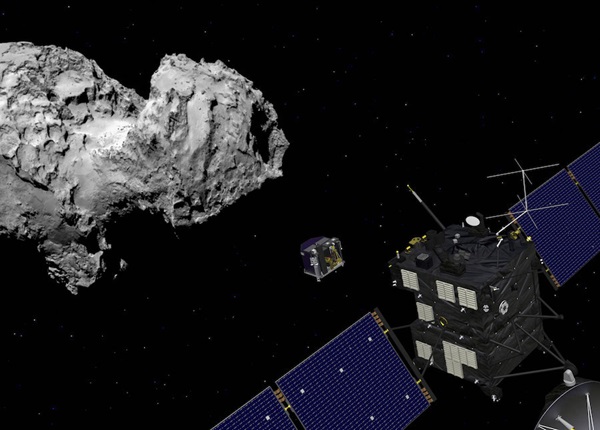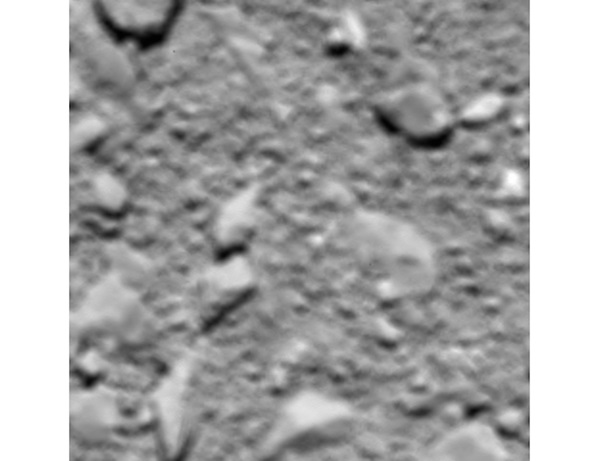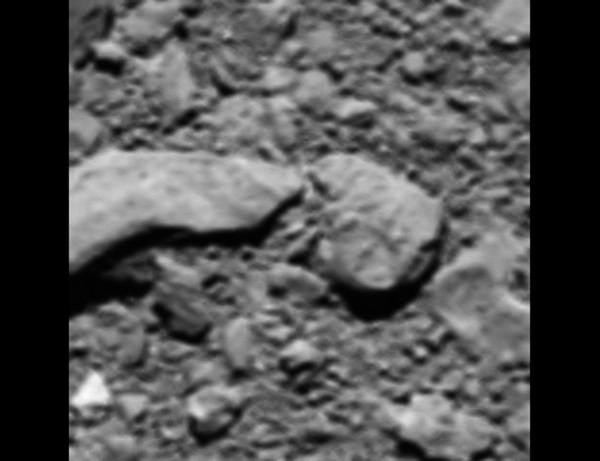Key Takeaways:
In 2004, the European Space Agency (ESA) launched an ambitious space probe named Rosetta, which was designed to approach, orbit, and study a comet as it traveled through our inner solar system. In 2014, Rosetta reached its target: Comet 67P/ Churyumov-Gerasimenko. For the next 17 months, Rosetta orbited the dirty snowball, examining the object in unprecedented detail.
Near the end of the mission, as Rosetta and Comet 67P rounded the Sun and started zooming back towards the outer solar system, researchers decided there would not be enough sunlight to charge Rosetta’s solar panels, which would eventually render the probe useless. Therefore, they decided to sacrifice Rosetta for the sake of one final mission — a controlled crash into the comet’s surface, all the time gathering as much data and as many images as possible.
In 2016, Rosetta successfully completed its last mission, returning a wealth of scientific information related to the comet’s dust, gas, and plasma. During its final descent, Rosetta continually beamed back images, including the previously published “final” image shown above. However, what we thought was the last image from Rosetta was not actually the last image it captured.
Recently, the camera team for Rosetta discovered a few stray telemetry packets floating around on their server. Once spotted, it didn’t take long before they realized that the data could be part of another image. And lo and behold, it was.
Throughout its mission, Rosetta transmitted images by splitting them into six separate telemetry packets before sending them to Earth. However, its final transmission was interrupted and only three full packets were broadcast, fooling the automatic processing software. Once the researchers recognized the data was part of an image, they set to work reconstructing it, ultimately producing the image you see below.
Because of the compression software used on Rosetta, the images were transmitted layer-by-layer rather than pixel-by-pixel. This means that only receiving half the data made the entire image much blurrier than it should have been.
Fortunately, Rosetta’s camera was configured in such a way that the final image was in nearly ideal focus. Therefore, even with just half the image data, Rosetta’s final photograph of Comet 67P is the most detailed to date. Though one more image of Comet 67P may not provide researchers with much new information, it does serve as a nice cherry on top of an already impressive mission.
Over the course of the Rosetta mission, scientists have been able to study a number of important cometary features and processes, ranging from geological processes — like surface erosion and dust migration — to more dramatic events — like fractures forming in craters, outbursts of gas that move boulders, and even a cliff collapsing to expose what could be ice.
In a video produced by the ESA titled Rosetta’s Ongoing Legacy, project scientist Matt Taylor sums up the importance of the mission by saying, “We’re going to refine our ideas of what the comet is [and] where the comet came from … We’re really able to hone our ideas of how the comet formed, and how that fits into the evolution of the solar system. And that’s going to continue.”
So, even though Rosetta is dead and hitching a ride through our outer solar system, it leaves behind it a path for future missions to follow. As more and more comets are studied, researchers will be able to address some major questions: Can comets be mined? Did they bring water to Earth? What about the seeds of life (organic molecules)?
As is often the case with science, no matter what the answers to these questions end up being, they will surely lead us in new directions that we never before imagined.













